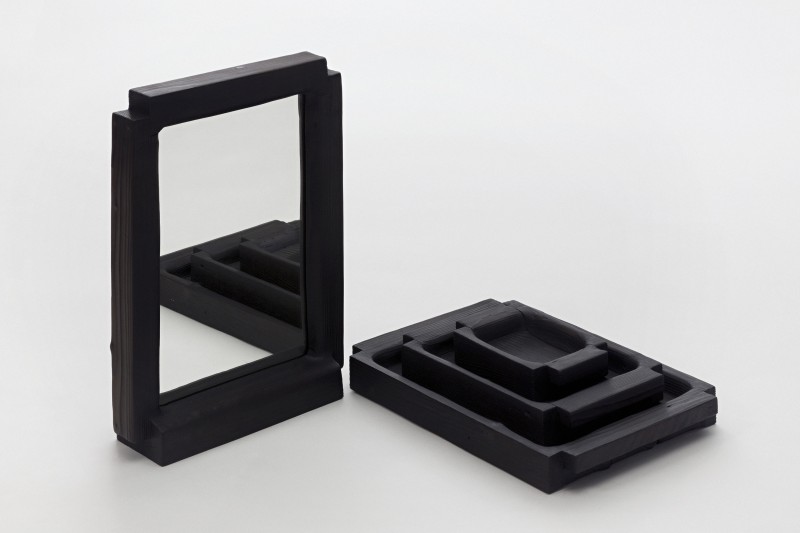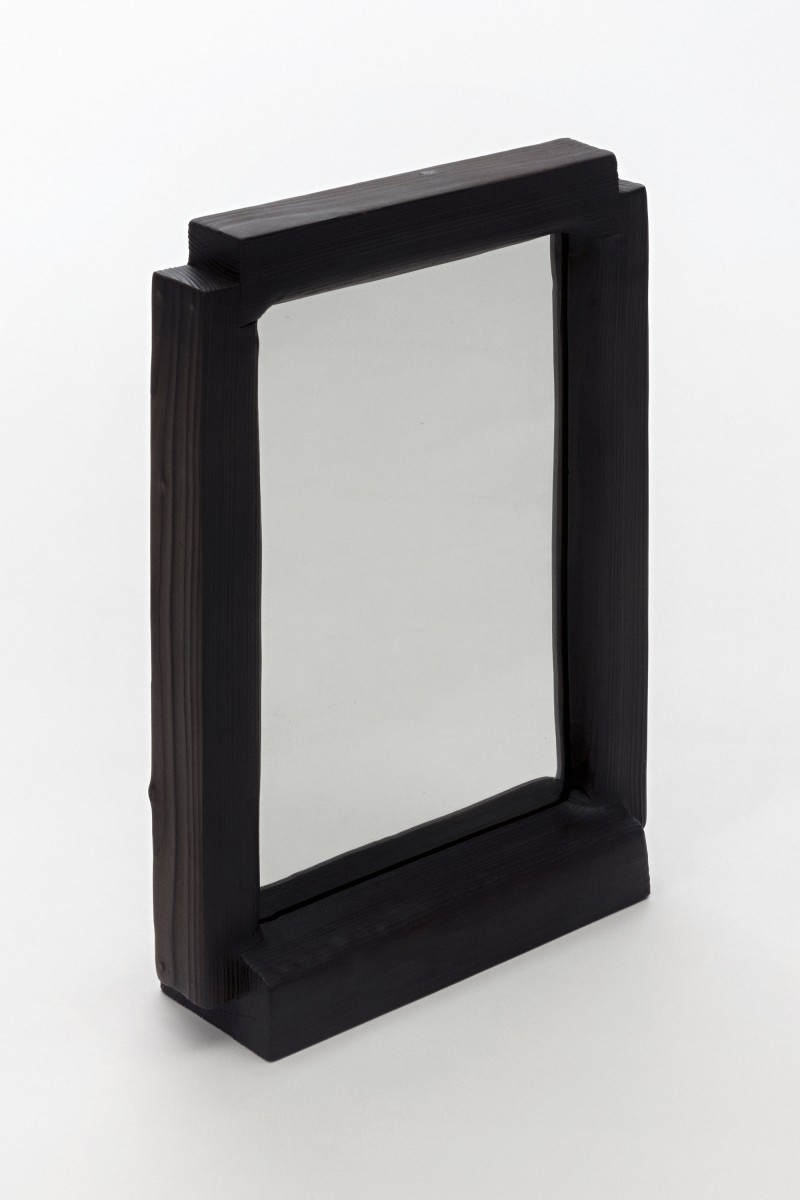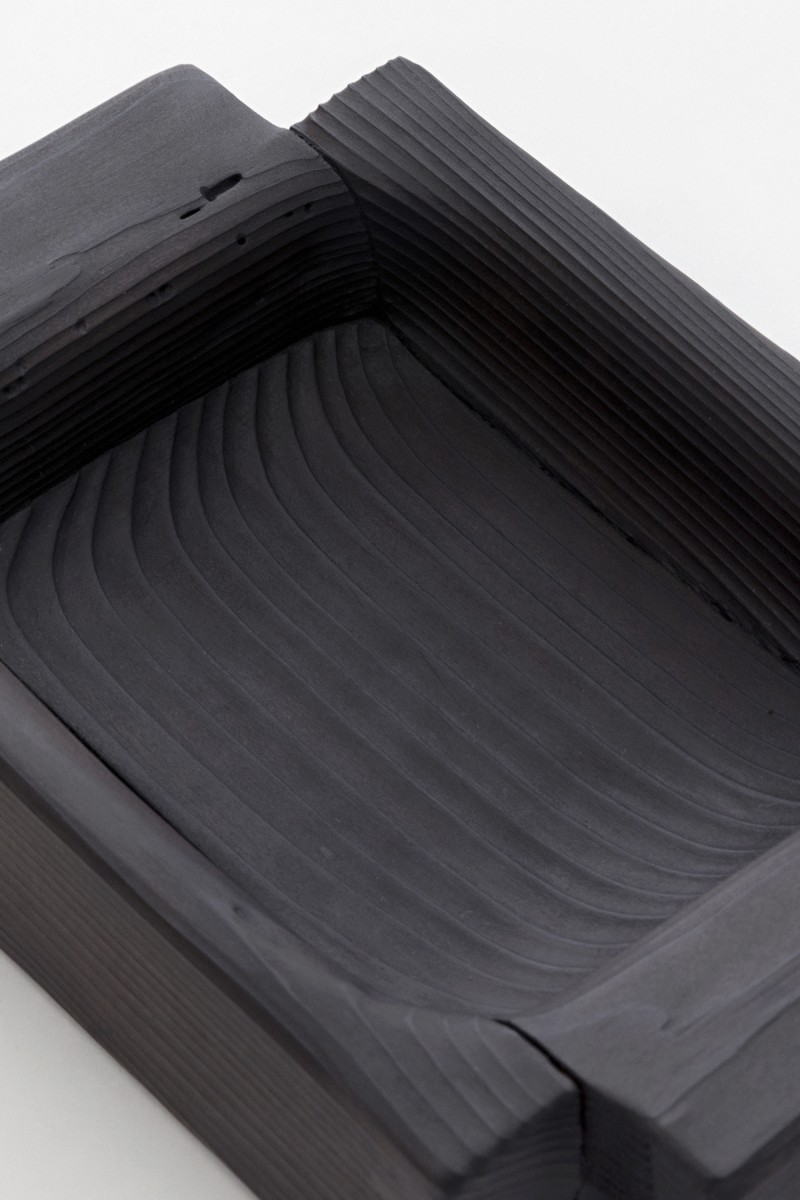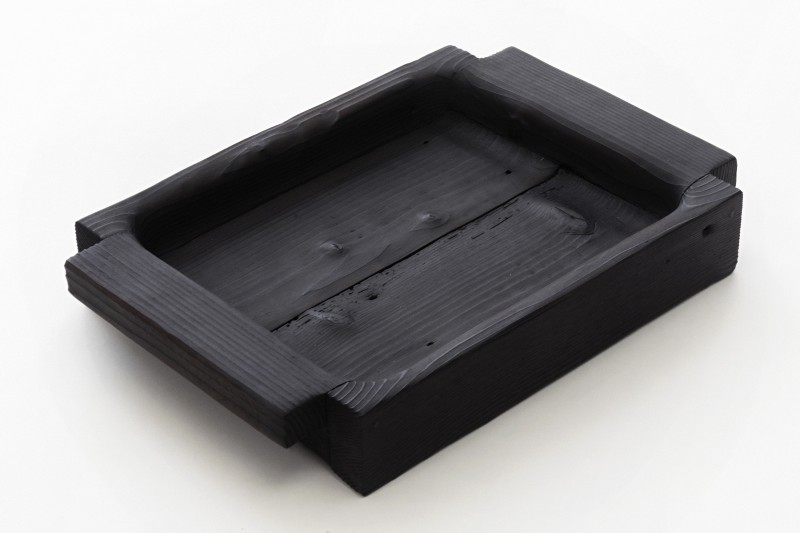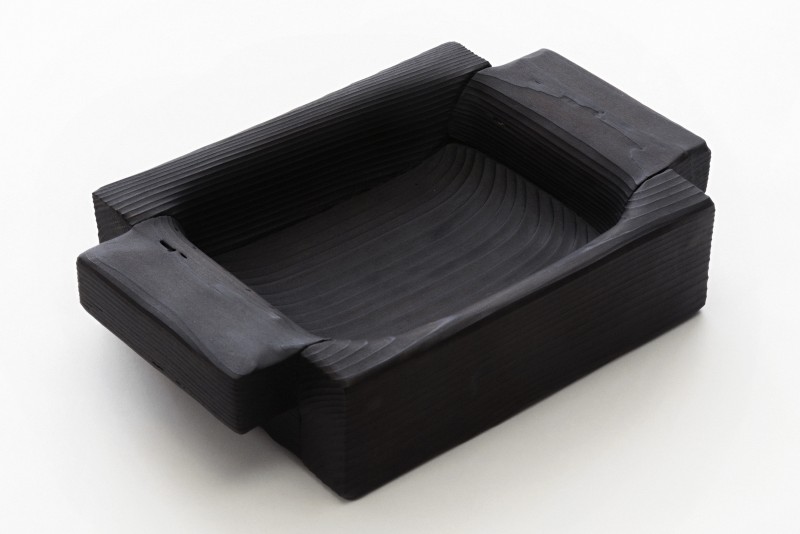The Urban Woodland
Out of the Woodworks
The material - The wood with which these objects are made comes from partition walls commonly found in attics and cellars all over Switzerland. In bunkers, these nailed structures were designed to be easily taken apart in the case of emergency to create livable space, or furniture such as beds.
With the demolition of many mid-century buildings in urban areas, one could call this a ‘deforestation’ of hidden urban wood-lands. And with a low perceived value, most of this material is going to waste.
The process - The rough sawn pine slats called for a process to make the surface more friendly to the touch and resistant. In Japan, the craft of Yakisugi (burnt cypress) has been used for centuries to protect pine wood from weather and fungus. For this project, burning and rubbing off the charred layer has become a natural way to soften the shape and reveal more structure. The deep black finish is then reintroduced through steps of staining and oiling with a charcoal pigment, equally produced with the same wood. This closes the loop, from the object’s structure and the fuel to burn it, or the pigment and the fire in the oven to produce it - those pine slats are the sole material used.
Mirror: 33 × H 40 × D 1 cm
Tray large: 29 × 41 × H 4.8 cm
Tray medium: 21 × 31 × H 4.8 cm
Tays small: 13 × 20 × H 4.8 cm
Materials: Pine wood
Finish: Burned, brushed, stained and oiled
